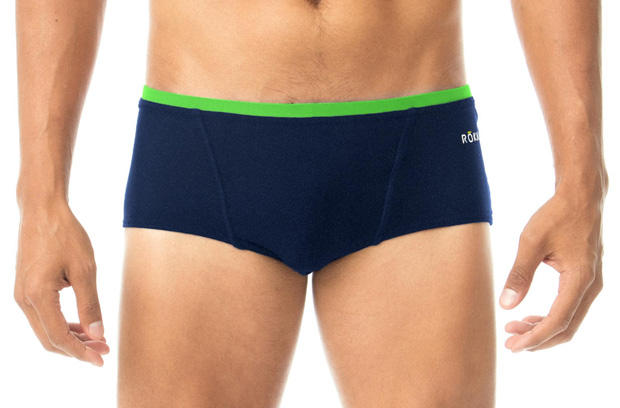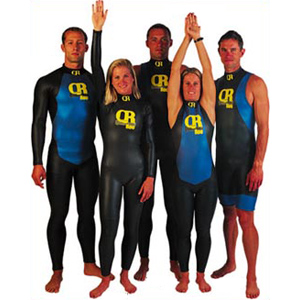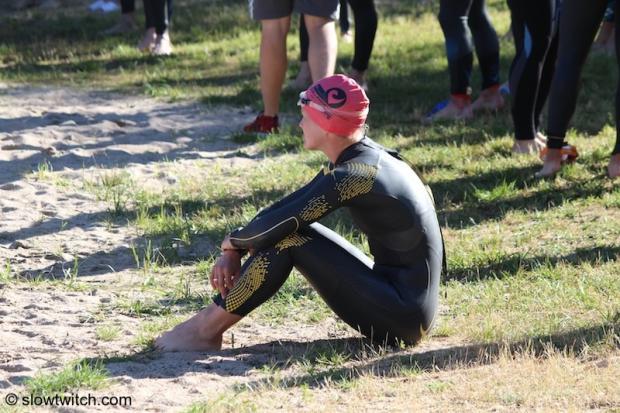Roka R1 Goggle
I took Roka's new R1 goggle to the pool. I have 3 go-to goggles in my swim bag: blueseventy's Vision goggles are among the only 1-piece molded goggles that fit my strangely-shaped face (eyes close together but deep-set). The second is Zoggs' Predator Flex Reactor and it's the other molded goggle that can fit my face without changing out the nose bridge. The Predator Photochromic is dearly-priced at $70 but it's a truly good photochromic goggle and worth the money.
Finally, Roka's own F1 goggle is a favorite of mine. It's a civilized Swede. The F1 with the Dark Amber Mirror lens is just a great goggle for the $20 price and it does come with a set of nose bridges. Very comfortable, easy to make a seal, does almost everything you want a goggle to do.
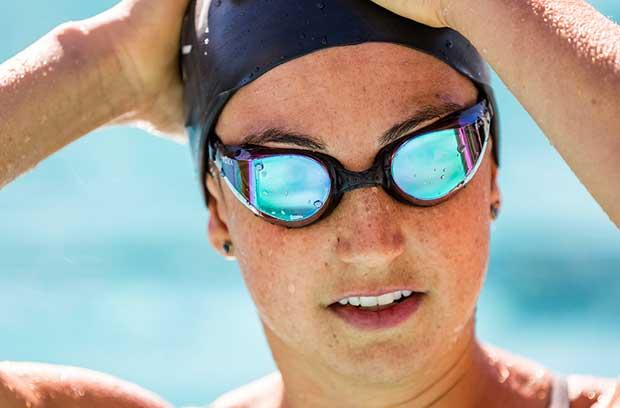
Roka's new R1 is a 1-piece molded goggle (pictured above, worn by Olympic star swimmer Rebecca Soni). The R1 will be available in Roka's terrific lenses, but the feature that sets this goggle apart is visibility. It's visibility not at the expense of – and I thought before I chose this word – discretion. What I want is a goggle that offers comfort, anti-fog, a great lens, no distortion, visibility, ease-of-adjustment, and in a discrete size.
The first goggle to offer terrific visibility in a relatively discrete size was Aquasphere when it introduced the Kayenne in 2009. Roka has the luxury of 7 years of Aquasphere trailblazing the category. The R1 is the kind of goggle that you'd expect to see if you had 7 years worth of technological improvements to build upon.
How does the R1 give you visibility in a relatively spare, discrete size? The way the lens curves on the side is apparent just by looking at the goggle and it does this without distortion. Less obvious is the angle of the lens as it sits directly in front of the eye. Rather than the lens surface perpendicular to the direction you're looking, the lens sits at an angle. It's close to the face above the eye, just under the brow, further away and at the typical distance from the face below the eye. There is less frame and gasket above the eye. I think you can see this in the image below.
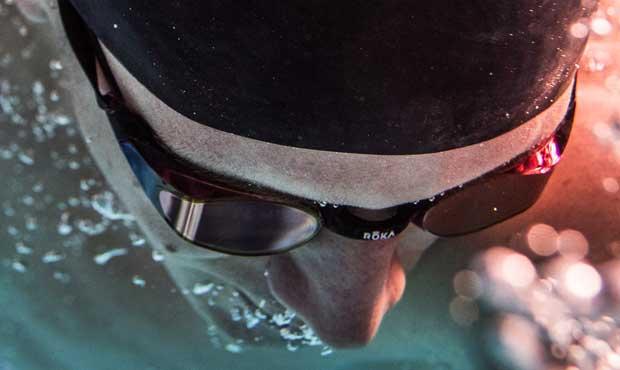
This means you don't have to flex your trapezius muscles, craning your neck forward, as much when sighting. This is kind of a big deal. Yes, the peripheral vision of the R1 is nice, but the killer feature is the ability to swim on the feet of the person in front of you and see those feet without neck extension. The more you extend your neck the slower you swim. (If there's one obvious posture that screams “I'm an adult-onset-swimmer!” it's the perpetually raised head while swimming, water hitting the forehead just above the eyebrow.)
Roka is onto something with the R1, and it calls this slanted lens feature Rapidsight. It's visibility without bulk, and without a raised profile that catches water (consider the Huub Aphotic, which has a nice photochromic lens, fits great, but does have a raised profile that can catch water when I push off the wall after a turn.)

Is there a negative to the R1? Yes. It does not (yet) have a changeable nose bridge. Therefore, this goggle fits you or it doesn't or, to put it another way, it may really nicely fit both eyes independently; it may make a seal on each eye; but it might not make a seal if you're a beady-eyed deep-socketed fellow like I am. Last week we hosted a F.I.S.T. Bike Fit Workshop here at the Compound and four of us went swimming during the workshop. I took the R1 so I could get some feedback from swimmers other than me. All were exceptionally impressed by the visibility. We were split 50/50 on the fit. Two were extremely happy, two needed a different nose bridge.
Alas, I am now without my R1 because one of these workshoppers loved the R1 so much he became militant. All our workshop attendees have since gone home and my R1 goggles now live in Florida.
Do I think the R1 is a breakthough? Potentially. Just as the Kayenne was 7 years ago I think the R1 could remake how we think of goggles that have that terrific field of vision (which helps so much in rough water swimming). Roka has great lenses, and this plus its anti-fog plus the R1's vision profile could push the category forward just like Aquasphere did in 2009.
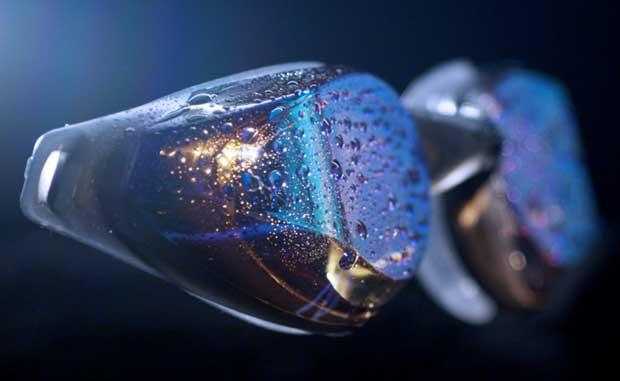
But I don't see the R1 as a goggle model, rather as a technical platform. I'm going to remain a fan of Roka's F1 goggle because it appeals to the minimalist in me – it resonates with my inner Swede. But, could the R1's lens angle – forget the side-vision for a moment – eventually make it into the F1? Might variable-length nose bridges show up in the R1? Will Roka bring Rapidsight into more of its goggles? We'll see.
The Roka R1 is available soon, at a cost of $30 and up.


